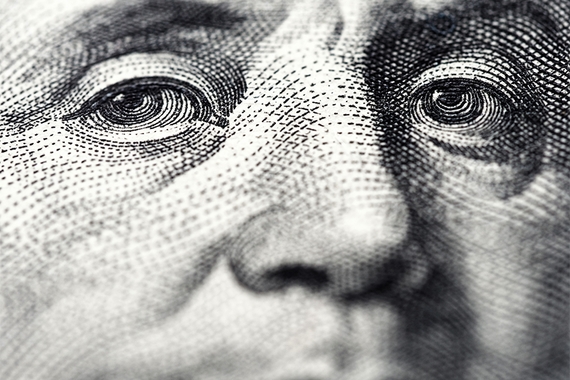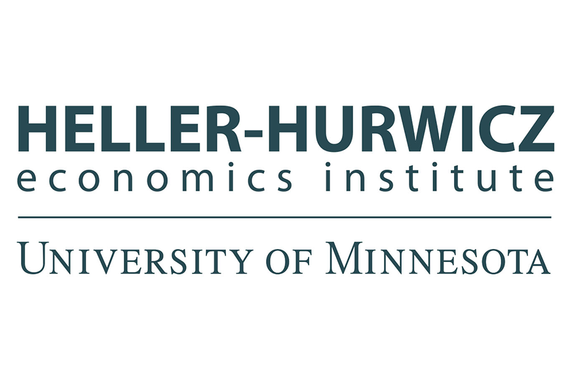How Should Fiscal and Monetary Policy Account for Inequality?
Q. Generations of economists have pursued strategies for promoting economic growth, rising employment, and increasing wealth. But they didn’t concern themselves with distribution. Why?
A. There were two views. One view was that if you get the aggregate stuff right, the distribution will take care of itself. The other view was that, on some level, for judging policies that redistribute, you would have to compare one individual versus another. You have to compare the happiness of one relative to the happiness of the other. How do we make that judgment?
Q. Is ignoring distribution driven by ideology or by the sheer complexity of a diverse workforce and households that start with plenty and families that have little? The math gets harder the more variables you add.
A. The toolkit which macroeconomists had for a long time was not rich enough to handle situations with a lot of heterogeneity. And that’s been changing.
People can be different in income. People can be different in wealth. People can be different in ages and gender. Once you get down to the details, all these differences matter in terms of how they behave in an economic environment. How they save. How they work. So on and so forth.
In the last few years, there’s been progress in developing economic modeling tools and pushing forward along the heterogeneity dimension of models.
Q. Let’s take a step back. What risks do we take with policies that perpetuate – or increase – income inequality?
A. Income inequality, per se, may be the outcome of a well-functioning economy. Just because there is inequality, doesn’t mean that’s a bad thing. This is something important.
I’ll give you a very simple example. You and I can be different because I was lucky, and you were unlucky. Or because I worked hard, and you didn’t.
If it’s luck, maybe it’s okay to redistribute between me and you. Because it was luck. It was not me and you. It was something beyond our control.
But if one guy slacked and the other guy did not, then you wouldn’t have the same feeling in terms of taking wealth from me and giving it to you.
The sort of policies which one should pursue are policies that provide insurance against luck, as well as they can, without encouraging slacking behavior. The goal is not to remedy inequality but to understand where it’s coming from.
Q. What are the specific challenges in anticipating how different players are affected by changes in taxes and interest rates?
A. One challenge is lack of adequate data to tease apart how people respond to policies. There may or may not be enough data to tell us how rich people, poor people or people who are different in other dimensions, would respond to a tax change.
Q. You also talk about the consequences of monetary policy.
A. Roughly speaking, monetary policy is the Fed picking a path for nominal interest rates. Although they’re picking one interest rate, all interest rates in the economy are linked.
Some people have huge mortgage debts. Other people have huge trust funds and pension funds. Somebody’s paying interest out of their income and somebody’s receiving interest. If interest rates go up, that will affect one very differently than the other.
Monetary policy has distributional consequences and this is something policymakers should take into consideration.
Q. Policy moves should take into account inequality?
A. It’s much more important than just economic stabilization. A change in aggregate growth rate, say from 3 percent to 3.5 percent, that’s a small change. Even if it didn’t do that, it wouldn’t be the end of the world. On the other hand, if you look under the hood, some people are losing jobs. The effect of policy on disparity is more important than stabilization of the economy, at large.
Q. The latest tax bill includes many provisions that may increase economic inequality. How can research like yours inform political choices – before they’re made?
A. I have a different project with Ellen McGrattan, where we are specifically looking at many of these issues. Where we’re thinking about “What do private businesses do?”
Think of a dentist. A dentist is looking after his patients, but he’s also spending a lot of time getting new patients. A lot of time and energy small businesses spend is in accumulating intangible assets – like customer lists and brand name. These are hard-to-measure objects, but they’re an important part of the overall wealth of the private businesses.
Q. No one wants to go to a discount dentist. Price isn’t the only signal people follow. Reputation will get me there.
A. A lot of a dentist’s time is spent building up this reputation. What would happen if you changed the tax policy in terms of his incentives to spend time building up his reputation or just leave and work for a big hospital?
Q. Why would I care whether a dentist works for himself or works for a corporation?
A. Because in some cases they provide different services. A dentist who runs his own practice may provide a more customized service which can be valuable for consumers.
From the dentist’s perspective, working for himself maybe more profitable as he can capitalize a larger fraction of his talent.
From a policy perspective, say when you are thinking about taxation of labor or business income, it is important to differentiate a dentist who works for himself or for a corporation.
Q. Recessions aren’t the only shocks to the economy. How do changing demands for specific skills and technology advances affect income and wealth distribution?
A. Technological growth doesn’t mean everybody is equally productive. Educated people benefit more from these technological changes than non-college-educated people.
Q. How do you hope this academic research could filter into the real world?
A. There has to be a change in the mindset both of academics and policymakers. A lot of policymakers understand that what they do affects different people differently, but that still isn’t incorporated in their toolkit.
Q. Even if new technology gains promise great rewards in income and wealth, what does your research say about government strategies to ensure that all the gains go stockholders and top executives?
A. How should additional income be shared between capital owners and workers? Part of it is, they could decide on their own. One way would be capital owners get more, but they’re bearing the risk of company reversals. There might be reasons why owners might get more.
There are some limitations which prevent people from deciding in overt agreements how income should be split.
Q. The decline of unions?
A. It could be that. The other thing could be that not all contingencies can be foreseen and agreed upon in advance. It’s hard to write or enforce such contracts, partly because of labor laws and other things.
Which means this ideal world, where owners of capital and labor can decide what to do with additional income voluntarily, is not necessarily the best description of the real world.
In that situation, policy can compensate a little bit.
Q. Warnings about the lopsided gains inherent in the new tax law were ignored. Are you optimistic or pessimistic about economic prescriptions being heeded?
A. There are several parts to the 2018 tax bill. Some of it is clearly arbitrary, the things like the reduction in state and local tax deductions. This seems clearly arbitrary because it disfavors the Democratic-leaning, high tax states and it serves no clear purpose.
Some parts of the tax bill look like they’re done in response to interest groups and lobbying. Benefitting some parts of society at the cost of others. There’s no reason for us to do that.
Q. What were the good elements of the tax bill?
A. Lower average taxes, generally speaking, will push up investments.
Most of the big corporations are thinking about bringing back money from overseas. They have to pay a one-time tax, but it’s a good deal for them. All the concern has been in the last 10 or 15 years that corporations are parking money outside. That money is going to come into the U.S. and probably be invested.
Q. What’s next? What would you like to know that you don’t know about growth and inequality?
A. The measurement part we talked about is important. We don’t know much about how different people are affected and in turn, respond to changes in their environment. A lot of “what’s next” will be about putting serious effort into collecting good data and combining it with theory to think about designing better economic policies.



